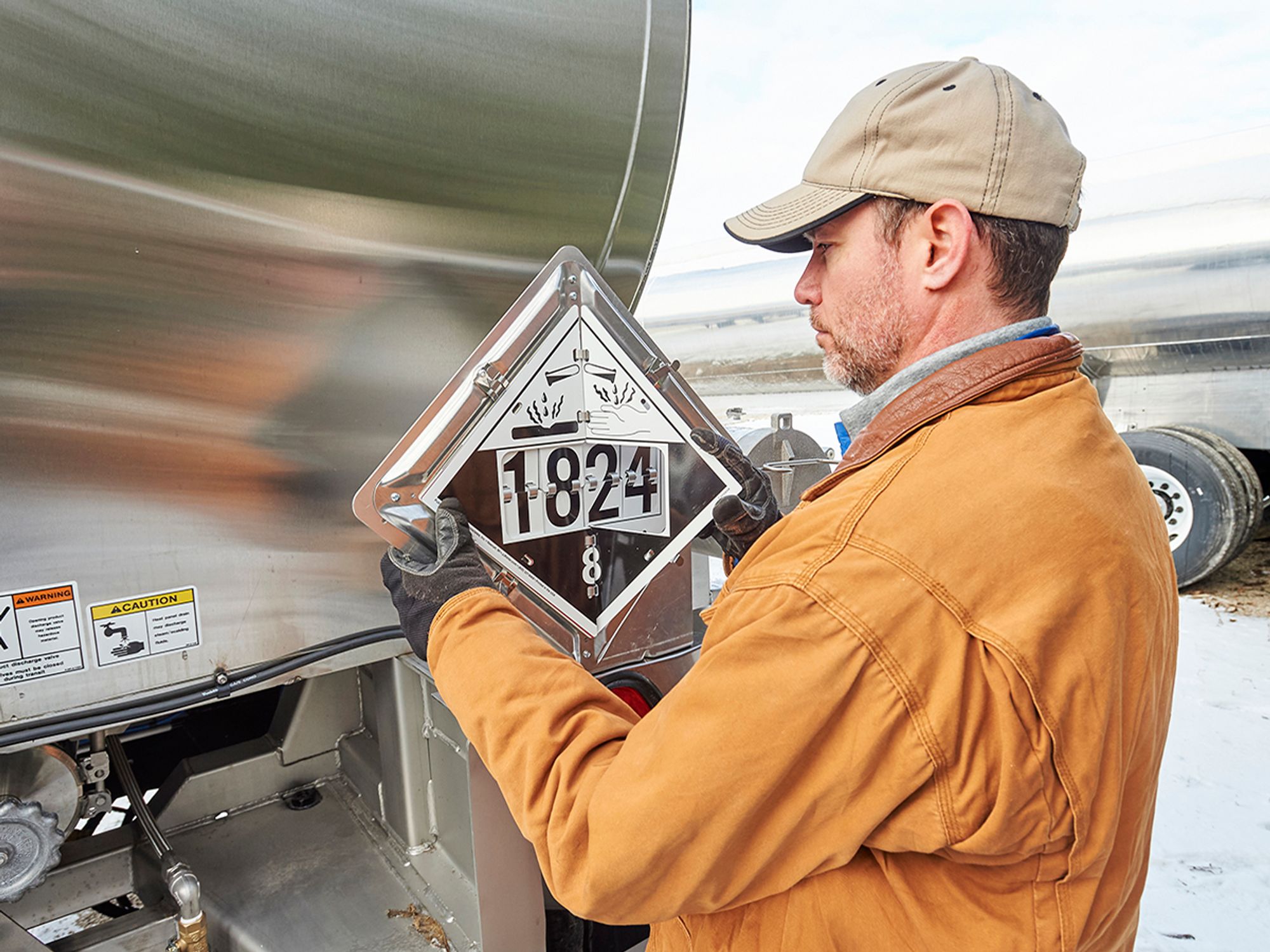Key definitions

Specific definitions for terms associated with markings, placards, and labels clarify their meaning.
Definitions for markings terminology
Bulk packagings: Other than vessels or barges, and including transport vehicles or freight containers, are bulk packagings in which hazardous materials are loaded with no intermediate form of containment and that have:
- A maximum capacity greater than 119 gallons (450 L) as a receptacle for a liquid;
- A maximum net mass greater than 882 pounds (400 kg) and a maximum capacity greater than 119 gallons (450 L), as a receptacle for a solid; or
- A water capacity greater than 1,000 pounds (454 kg), as a receptacle for a gas.
A large packaging in which hazardous materials are loaded with an intermediate form of containment, such as one or more articles or inner packagings, is also a bulk packaging.
Cargo aircraft only: This aircraft is used to transport cargo and is not engaged in carrying passengers. The terms “cargo aircraft only,” “cargo-only aircraft,” and “cargo aircraft” have the same meaning.
Limited quantity: When specified as such in a section applicable to a particular material, it means the maximum amount of a hazardous material for which there is a specific labeling or packaging exception.
Marking: This consists of a descriptive name, identification number, instructions, cautions, weight, specifications, or United Nations (UN) marks, or combinations thereof, required by the Hazardous Materials Regulations (HMR) on outer packagings of hazardous materials.
Non-bulk packagings: These packagings have:
- A maximum capacity of 119 gallons (450 L) or less as a receptacle for a liquid,
- A maximum net mass of 882 pounds (400 kg) or less and a maximum capacity of 119 gallons (450 L) or less as a receptacle for a solid,
- A water capacity of 1,000 pounds (454 kg) or less as a receptacle for a gas, or
- A maximum net mass of 882 pounds (400 kg) or less for a bag or a box conforming to the specification packaging requirements in Subpart L of Part 178.
Technical name: This is a recognized chemical name or microbiological name currently used in scientific and technical handbooks, journals, and texts. Generic descriptions are authorized for use as technical names provided they readily identify the general chemical group or microbiological group. Examples of acceptable generic chemical descriptions are organic phosphate compounds, petroleum aliphatic hydrocarbons, and tertiary amines. For proficiency testing only, generic microbiological descriptions such as bacteria, mycobacteria, fungus, and viral samples may be used. Except for names that appear in Subpart B of Part 172 of this subchapter, trade names may not be used as technical names.
Definitions associated with placards
Freight container: A reusable container having a volume of 64 cubic feet or more, designed and constructed to permit being lifted with its contents intact and intended primarily for containment of packages (in unit form) during transportation.
Rail car: A car designed to carry freight or non-passenger personnel by rail, and includes a box car, flat car, gondola car, hopper car, tank car, and occupied caboose.
Residue: The hazardous material remaining in a packaging, including a tank car, after its contents have been unloaded to the maximum extent practicable and before the packaging is either refilled or cleaned of hazardous material and purged to remove any hazardous vapors.
Subsidiary hazard: The hazard of a material other than the primary hazard.
Transport vehicle: A cargo-carrying vehicle such as an automobile, van, tractor, truck, semitrailer, tank car, or rail car used for transportation of cargo by any mode. Each cargo-carrying body (trailer, rail car, etc.) is a separate transport vehicle.
Unit load device: Any type of freight container, aircraft container, aircraft pallet with a net, or aircraft pallet with a net over an igloo.
Definitions of terms associated with labels
Dewar flask: An insulating storage vessel that greatly lengthens the time during which its contents remain hotter or cooler than the flask’s surroundings. The vacuum flask consists of two flasks, placed one within the other and joined at the neck. The gap between the two flasks is partially evacuated of air, creating a near-vacuum that significantly reduces heat transfer by conduction or convection.
Limited quantity: When specified as such in a section applicable to a particular material, it means the maximum amount of a hazardous material for which there is a specific labeling or packaging exception.
Overpack: An enclosure used by a single consignor to provide protection or convenience in handling a package or to consolidate two or more packages. Overpack does not include a transport vehicle, freight container, or aircraft unit load device.
Examples of overpacks are one or more packages:
- Placed or stacked onto a load board such as a pallet and secured by strapping, shrink wrapping, stretch wrapping, or other suitable means; or
- Placed in a protective outer packaging such as a box or crate.
Primary label: A hazard warning label that corresponds with the primary hazard of the material.
Subsidiary label: A hazard warning label that corresponds with the subsidiary hazard of the material.
